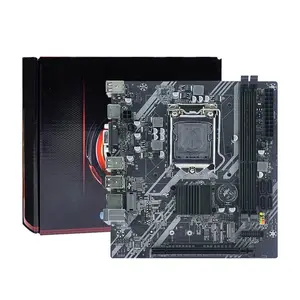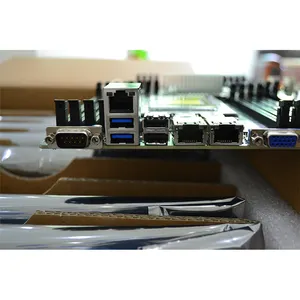Popular in your industry






































































Top categories
About amd server motherboards
AMD server motherboards are designed to cater to the specific needs of server systems, offering robust performance, reliability, and scalability. These motherboards are equipped with features that can handle demanding server workloads, such as data center applications, cloud computing, virtualization, and high-performance computing. The integration of cutting-edge technologies and support for powerful AMD server processors make these motherboards well-suited for various server environments.
AMD server motherboard specifications
The specifications of an AMD EPYC motherboard are tailored to support AMD EPYC processors, which are designed for data center and enterprise-level workloads. EPYC processors offer high core counts, efficient memory and I/O performance, and enterprise-grade security features. The motherboard provides multiple sockets to accommodate these processors, enabling further scalability by supporting dual-socket or multi-socket configurations. It also offers a high number of memory slots, supporting error-correcting code (ECC) memory to ensure data integrity. These motherboards are designed to handle intense workloads, hence they are equipped with robust cooling solutions to maintain optimal operating temperatures. In addition, they provide multiple high-speed expansion slots for additional connectivity and customization options. The motherboard also includes advanced management features, such as remote management capabilities through dedicated management ports or integrated baseboard management controllers (BMCs), facilitating efficient server monitoring and maintenance.
Components on an AMD server motherboard
AMD server motherboards consist of various components that work in unison to provide a stable and high-performance computing platform. These components include the chipset, which manages data flow between the processor, memory, and peripherals. The power delivery system ensures the stable and efficient supply of power to the CPU and other components. Memory slots are available to accommodate ECC memory modules, which are crucial for error detection and correction in server environments. The storage interfaces, such as SATA, SAS, and NVMe, allow for connecting various storage devices, catering to the diverse needs of server applications. The motherboard also features multiple PCIe slots for expansion cards, enabling the integration of additional networking, storage, and acceleration cards. Furthermore, the motherboard includes I/O ports for connectivity, including USB, Ethernet, and other essential interfaces. Management features, such as BMC, provide remote monitoring and control capabilities, enhancing the overall manageability of the server system.
Installing an AMD server motherboard
When installing an ASRockRack X470D4U or a Supermicro H11DSi, the first step is to ensure compatibility with the server chassis, processor, and other components. The motherboard should be placed on a non-conductive surface, and the I/O shield should be aligned with the corresponding cutout on the chassis. Carefully align the mounting holes on the motherboard with the standoffs on the chassis, and secure the motherboard in place using screws. Connect the power supply to the motherboard, ensuring proper alignment of the connectors. Install the CPU, making sure to align the CPU with the socket and apply thermal paste before attaching the heatsink. Insert the memory modules into the designated slots, following the recommended configuration for optimal performance. Connect the front panel connectors for power, reset, and other controls. Finally, complete the installation by connecting the storage drives, expansion cards, and other peripherals. Once all components are securely installed, the system can be powered on and configured to meet specific server requirements.






















